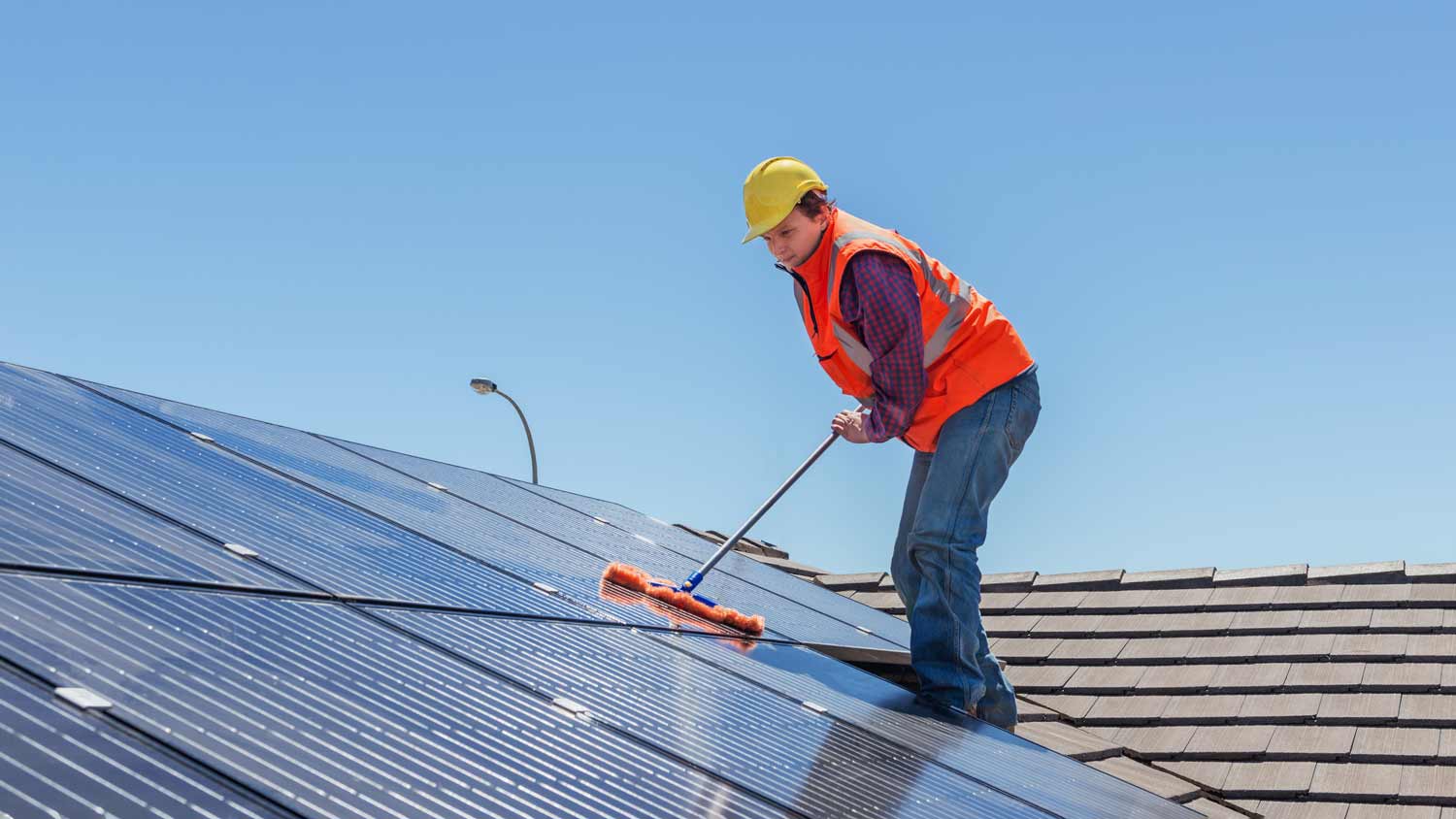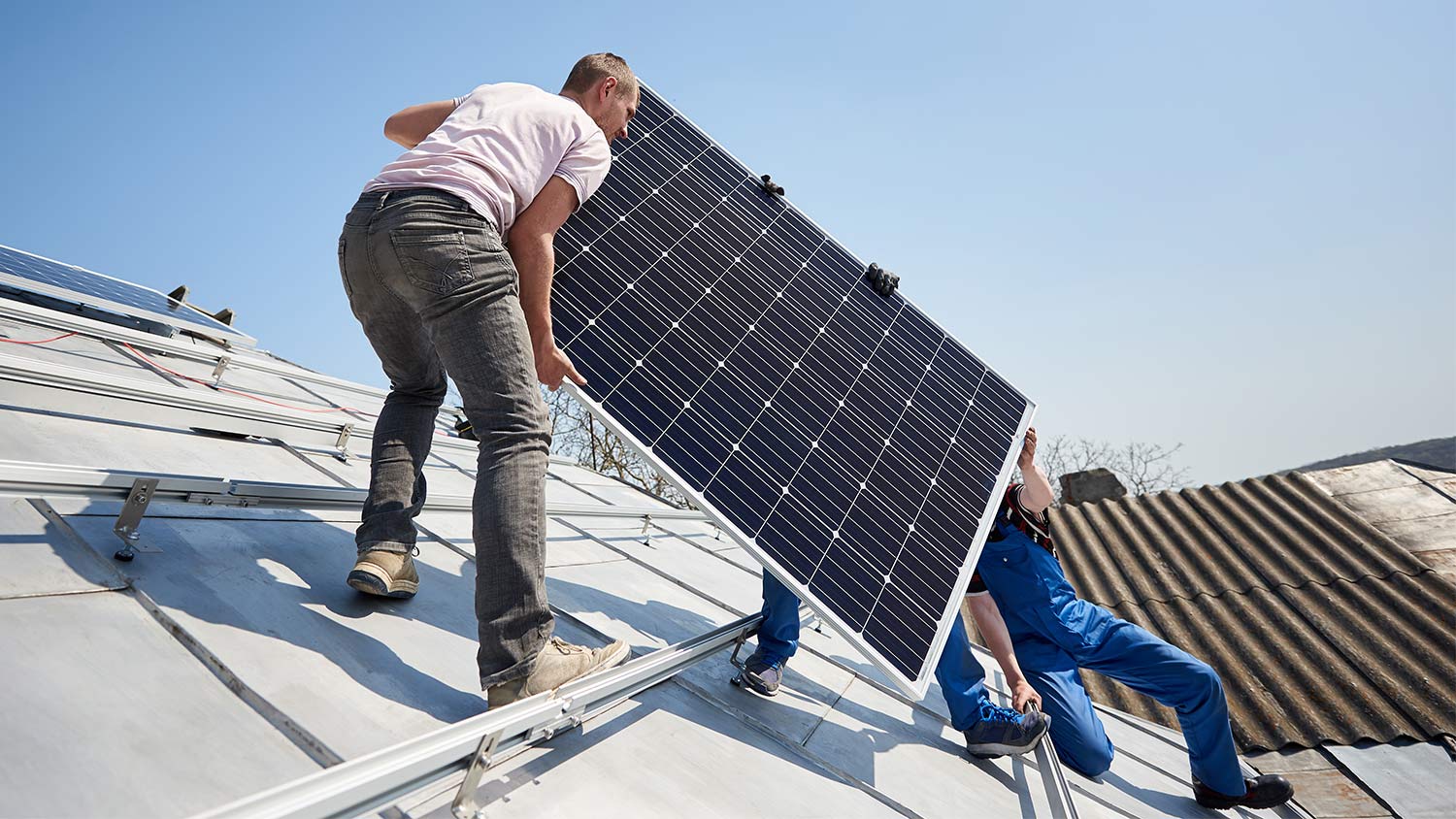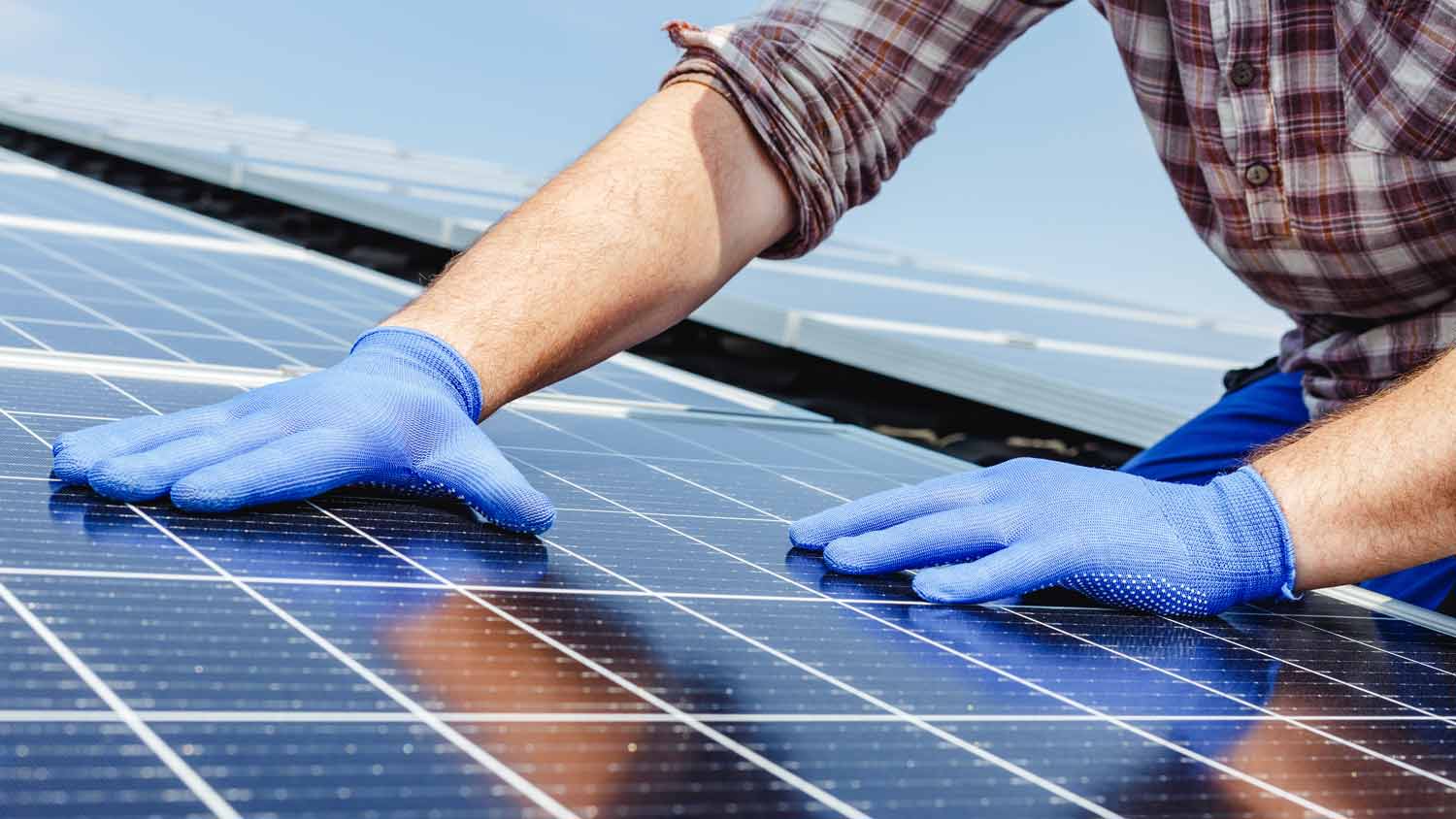
Budget for solar panel repair costs based on factors such as system type, panel size, accessibility, repair type, labor, parts, inspections, and more.
Installing solar panels costs an average of $27,172


Solar panel installation costs an average of $27,172. Most homeowners spend between $3,500 at the low end and a maximum of $55,000 on a complete system.
Where you live, the number of panels you need, maintenance requirements, and available rebates all determine the final price.
Solar panels allow you to start saving on electricity bills right away and keep saving for decades.
Beyond lowering bills, solar panels boost energy independence and shrink your carbon footprint.
This article was updated using automation technology and thoroughly reviewed for accuracy by HomeAdvisor Editor Ryan Noonan.
Installing solar panels costs an average of $27,172, with most homeowners spending between $18,351 and $36,399 on average. You can pay as little as $3,500 or as high as $55,000, depending on your project scope.
You’ll pay $2.50 to $3.50 per watt, depending on your location, system size, panel quality, and how complex the job is. By setting a clear budget, planning for routine upkeep, and hiring a trusted solar panel installation pro, you’ll end up with an efficient, long-lasting solar system.
Hard and soft costs both make up the total price of an installed solar panel system. Hard costs include the equipment and components of the system, such as the panels and mounting equipment. Soft costs represent labor, permits, and administrative fees.
Solar power system manufacturers and installers often break down prices into per-watt costs to provide a standardized measure across different installations and equipment. The cost per watt also demonstrates how overall cost and performance scale with the system’s capacity, with larger systems having a lower cost per watt but higher upfront costs than smaller systems.
System size is measured by capacity in kilowatts. Residential systems range from three kilowatts to 10 kilowatts, with higher kilowatt capacities indicating higher electricity production. Based on a 400-watt panel, the average U.S. home needs between 15 and 30 solar panels. Cost estimates by system size are as follows:
| System Size (kW) | Average Cost Range | Cost With Tax Credit |
|---|---|---|
| 5 | $12,500–$17,500 | $8,750–$12,250 |
| 6 | $15,000–$21,000 | $10,500–$14,700 |
| 7 | $17,500–$24,500 | $17,500–$24,500 |
| 8 | $17,600–$28,000 | $12,320–$19,600 |
| 9 | $22,500–$31,500 | $15,750–$22,050 |
| 10 | $25,000–$35,000 | $17,500–$24,500 |
| 11 | $27,500–$38,500 | $19,250–$26,950 |
| 12 | $30,000–$42,000 | $21,000–$29,400 |
Between the cost of materials and labor, you will pay between $2.50 and $3.50 per watt for solar panel installation.
The right system size hinges on how much power your household uses, the shape and size of your roof, and the efficiency of the panels you pick.
Panels account for one-third of a system’s price, and you’ll choose among three main types, each with its pros, cons, and cost per watt. On average, solar panels cost $0.70 to $1.50 per watt.
Monocrystalline solar panels are made with one lab-grown ingot crystal attached to the panel, offering the highest efficiency. Polycrystalline panels use fragmented crystals in wafer shapes, resulting in a lower-cost option with less efficiency. Thin-film panels use amorphous silicon, which is more affordable and versatile, but generally the least efficient and durable.
| Type | Cost per Watt | Life Expectancy in Years |
|---|---|---|
| Monocrystalline | $1–$1.50 | 40 |
| Polycrystalline | $0.90–$1 | 25–30 |
| Thin-film | $0.70–$1 | 10–20 |
In addition to panels, a residential solar power system includes various electrical and structural components. The main electrical components support the solar power system’s operation and include inverters, wiring and cables, disconnect switches, net metering systems, and electrical panels. A solar panel installation also includes an energy storage system, which may comprise battery inverters, charge controllers, and solar batteries, allowing the system to store and backup energy.
Structural components, such as basic or tracking mounts, are responsible for supporting solar panels. Roof attachments, clamps, and other components also ensure the panels remain secure.
Where you live—and how much sun your roof gets—has a significant impact on price. In sunny states like California, Florida, and Arizona, each panel pulls more power, so you may need fewer of them. While solar cells can generate 80% of their potential on cloudy days, areas with less sunlight may benefit from investing in additional battery storage to stockpile excess solar energy and adjustable mounts to maximize sunlight exposure.
Plan on spending $2.50 to $3.50 per watt for labor when you hire a local solar panel installation pro to handle your setup.
Solar panel permits and inspections will add an average of $450 to the total cost.
You can buy your system outright, but there are plenty of financing options available to soften the upfront cost. A solar loan spreads the cost over time with a down payment and interest terms that fit your budget. Homeowners can also access a purchase power agreement (PPA), in which a third party owns and installs the system in exchange for fixed monthly payments. PPAs aren’t eligible for tax benefits.
The federal Investment Tax Credit (ITC) lets you shave a dollar-for-dollar credit off your federal income tax bill. For systems installed in tax years 2022 to 2032, homeowners can claim up to 30% of the eligible system and installation costs. Between 2033 and 2035, homeowners can claim 26%.
State and local governments also offer solar tax incentives and credits. For example, New York offers a 25% tax credit for eligible systems. Local programs may also offer cash rebates to help offset upfront installation costs.
Installation is the biggest line item, but don’t forget the small, ongoing costs that keep your system running at peak efficiency. In some cases, solar panels can increase your home’s value and, in turn, your home insurance.
Maintenance and cleaning are essential for maintaining efficiency. Solar panel cleaning costs range from $150 to $750. Systems require cleaning annually at least, but some may need up to four cleans per year, depending on weather and other factors. Yearly inspections cost between $150 and $300.
Solar panel systems can also sustain wear and damage, and may require occasional repairs to the equipment or the supporting roof structure. Solar panel repair costs range from $200 to $1,250 on average, though extensive repairs can cost $3,600 or more. Examples of solar panel maintenance and repair costs you can expect include:
| Maintenance/Repair Type | Average Cost Range |
|---|---|
| Yearly inspection | $150–$300 |
| Panel cleaning | $150–$750 |
| Loose wiring | $100–$200 |
| Hail damage | $120–$500 per panel |
| Broken panel | $150–$500 per panel |
| Inverter replacement | $1,000–$3,000 |
| Roof repair | $150–$7,000 |
Here’s what the solar panel installation process looks like:
Consultation: A pro checks out your roof, reviews your energy bills, and designs a right-sized system.
Permits: Your installer handles the paperwork and utility approvals, keeping you informed about timelines.
Installation: The crew mounts the racking, sets the panels, and wires everything to your electrical panel.
Inspection: The team runs final tests, and local inspectors sign off before you flip the switch.
According to the Department of Energy, solar panels can increase home value by 4% or $20 for every $1 saved on annual utility bills, especially as potential home buyers increasingly value energy efficiency, reduced utility bills, and sustainability. Bigger systems don’t necessarily correlate with increased value; rather, it’s essential that the system is installed correctly and meets the home's general capacity.
Investing in solar panels can offer significant long-term cost savings, but the upfront cost remains a substantial expense. Try these strategies to streamline your solar panel installation costs:
Claim every federal, state, and local solar incentive you qualify for.
Collect quotes from at least three local solar panel installers to compare apples to apples.
Dig into each proposal’s equipment list and workmanship details before you sign.
Consider solar-specific loans or financing programs with low interest rates.
Work with your solar panel installation pro to fine-tune system size, layout, and mounting so you’re not paying for more wattage than you need.
No place is more important than your home, which is why HomeAdvisor connects homeowners with local pros to transform their houses into homes they love. To help homeowners prepare for their next project, HomeAdvisor provides readers with accurate cost data and follows strict editorial guidelines. After a project is complete, we survey real customers about the costs to develop the pricing data you see, so you can make the best decisions for you and your home. We pair this data with research from reputable sources, including the U.S. Bureau of Labor Statistics, academic journals, market studies, and interviews with industry experts—all to ensure our prices reflect real-world projects.
From average costs to expert advice, get all the answers you need to get your job done.

Budget for solar panel repair costs based on factors such as system type, panel size, accessibility, repair type, labor, parts, inspections, and more.

Wondering who repairs solar panels? Learn who to call—solar technicians, installers, or electricians—and when to DIY. See costs and smart next steps.

Who to hire for solar panel maintenance? Learn if a solar repair company or electrician is right, what they do, and typical costs

Who installs solar panels? Learn who to hire—certified installers vs electricians—and which certifications protect permits, safety, and your warranty.

Who to hire for a solar panel inspection for a new home? See whether to call a certified solar installer or electrician and what they check

Who removes solar panels? Learn if roofers or solar technicians handle removal, steps pros follow, and cost factors to plan your project